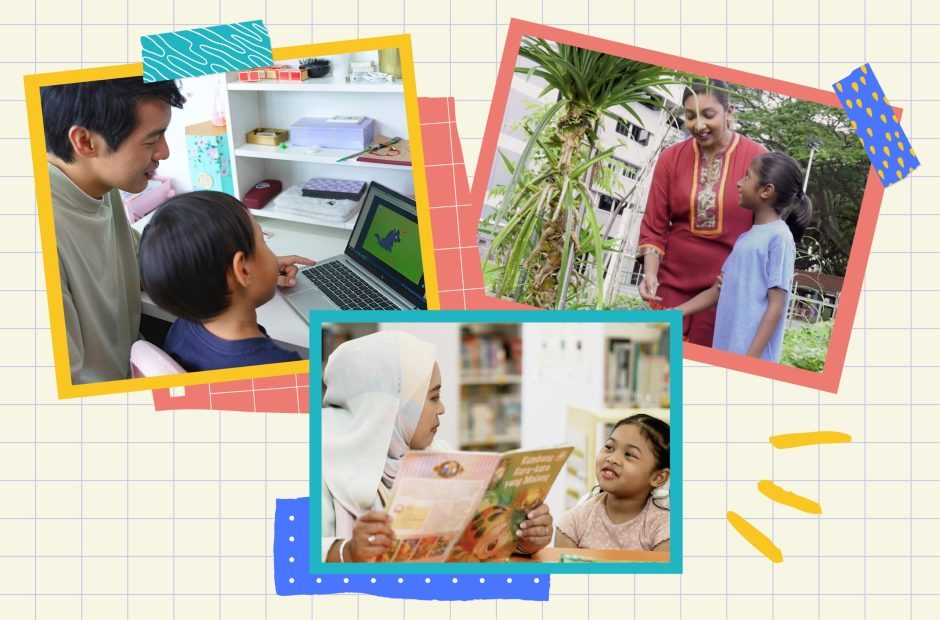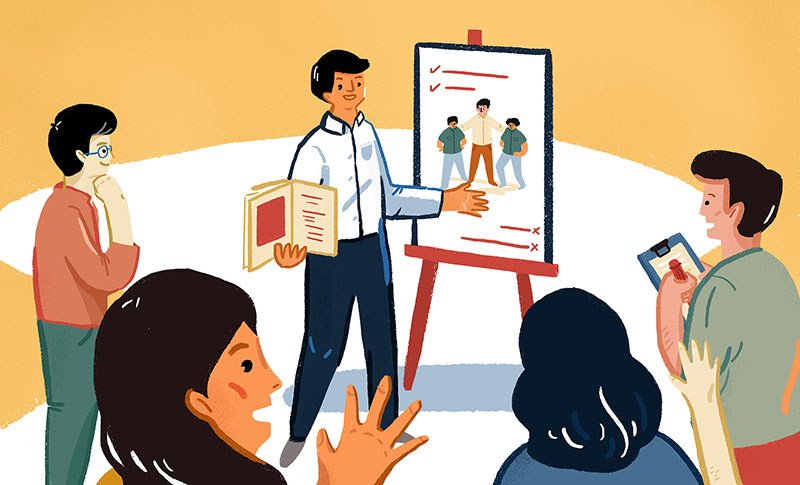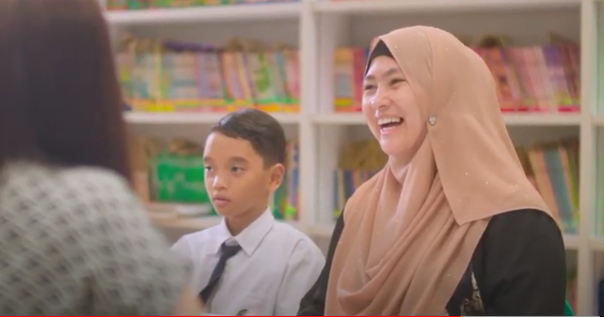“I want to encourage my children to be interested in learning our Mother Tongue Language.”
“I want to expose my children to more of our Mother Tongue Language at home.”
“I want my child to enjoy reading books in my mother tongue.”
Parents often express a desire for their children to use their Mother Tongue Languages (MTL) more frequently. They ask how they as parents can help teachers to achieve this beyond the classroom?
Indeed, Mother Tongue learning should not just be confined to the walls of the classroom. Our children’s interest in Chinese, Malay and Tamil language learning can be further enhanced at home.
An easy first step to take is to introduce simple MTL terms during your daily activities. For example, when having a meal, parents could say the names of the dishes in their MTL. They could also use their MTL as they discuss and plan for family activities.

If you face difficulty in using the right words, consider looking up the words online or using a dictionary together with your child.
Importantly, let your children have fun while doing these activities together.
Enjoyable Mother Tongue activities can strengthen bonds and enhance the learning experience for your children. Your children’s confidence in using their MTL will increase too as they see and hear you using the language with them.
Here are some good MTL habits you can practise with your child:
1. Storytelling, not just at bedtime
How often does storytelling happen at home? It doesn’t need to be just a bedtime routine with your children.
Set aside time for reading MTL stories. You can use books, e-books, or any age-appropriate online resources. You can also incorporate role play into the MTL storytelling process to make it more fun and engaging.
To top it off, engage your children in discussions based on the story. This is when you can pique their curiosity and motivate them to find out more details from the story. This will encourage a more impactful and interactive exchange of ideas.
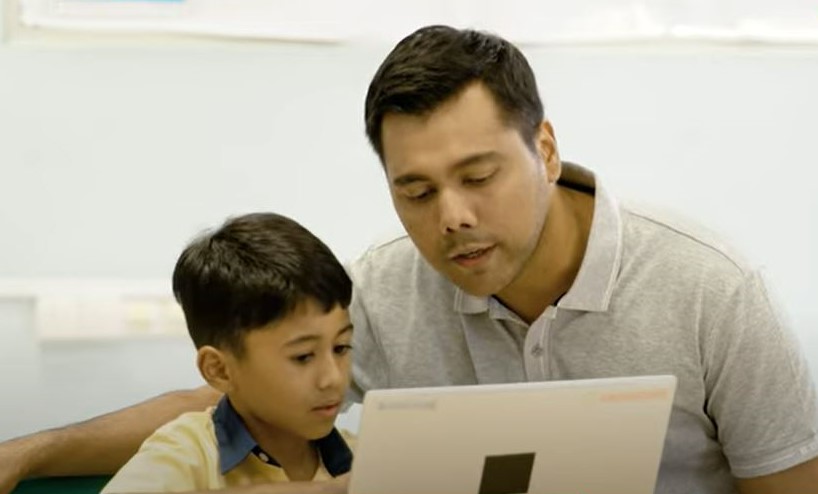
Dr Venugobal S/O M Thangaraju, Master Specialist and Assistant Director for Tamil Language at MOE’s Curriculum Planning and Development Division, says, “Storytelling is an art. It would be a wonderful way to captivate children’s imagination and to foster positive engagement. It is proven through research works that storytelling helps in language development in the early years.”
He adds, “Reading or narrating a story to a child opens the window of imagination and curiosity in children. More importantly, stories with songs and animation will ignite the joy of reading among children.”
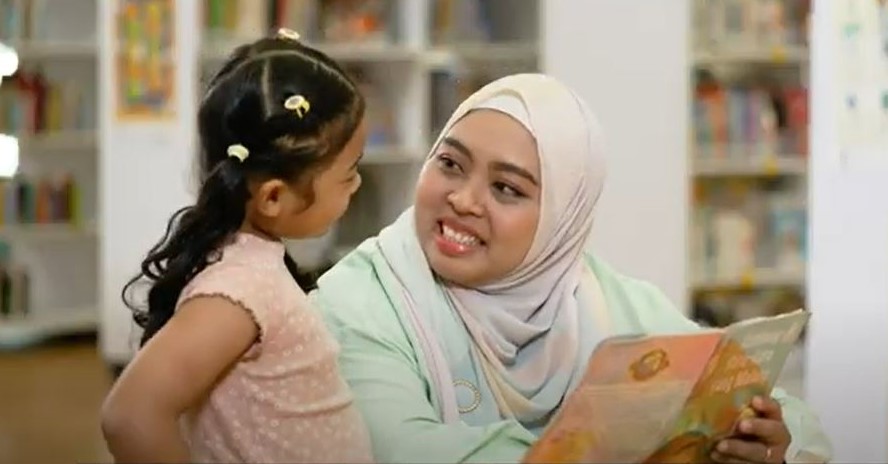
The 2024 Mother Tongue Language Curriculum taps on storytelling as one of the key strategies in teaching and learning. Children will not just experience storytelling in the classroom using Big Books and Small Books. Interactive books have been developed and made available on the Student Learning Space (SLS) portal. These digital books come with audio effects, narration and other interactive functions. You can access these digital books together with your child, and learn anytime and anywhere.
2. Use the fun resources from school, like games and quizzes
The new MTL curriculum also incorporates a greater use of technology.
Parents, you can access the interactive and audio materials on SLS at any time, to encourage your children to talk about their favourite part of a story or play a language game with you.
For example, for Chinese Language, parents will discover a series of engaging animations and games designed to support their children’s learning on SLS. Some of these animations feature a charming character called Little Fairy, who guides students through short, humorous stories to enhance their Chinese language skills.
Additionally, students can practise both Hanyu Pinyin and Chinese characters through playing language games, whether they’re at school or at home.
For Tamil Language materials, there are resources such as tongue-placement animations, Augmented Reality experiences, and reading pen and digital cards.
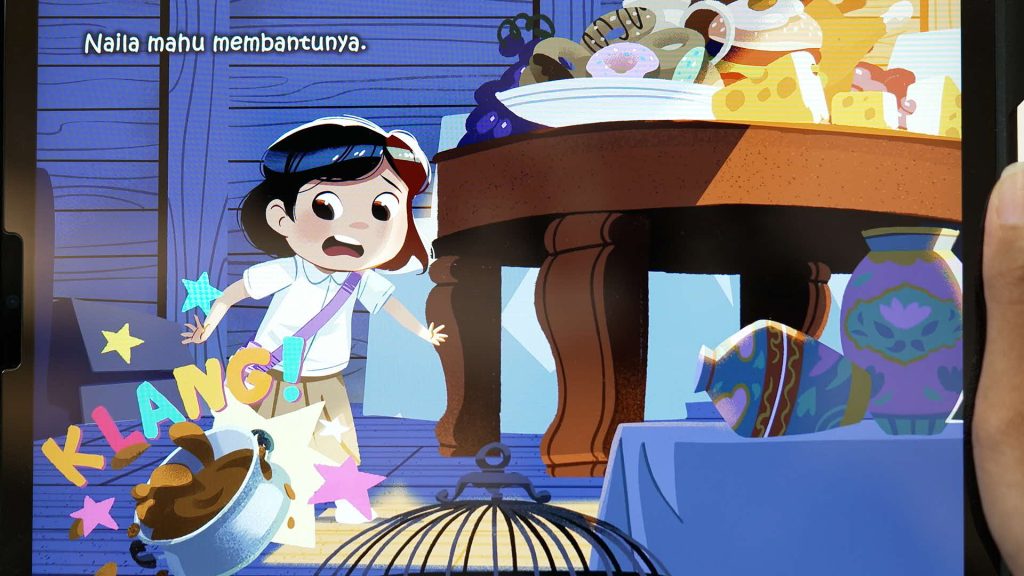
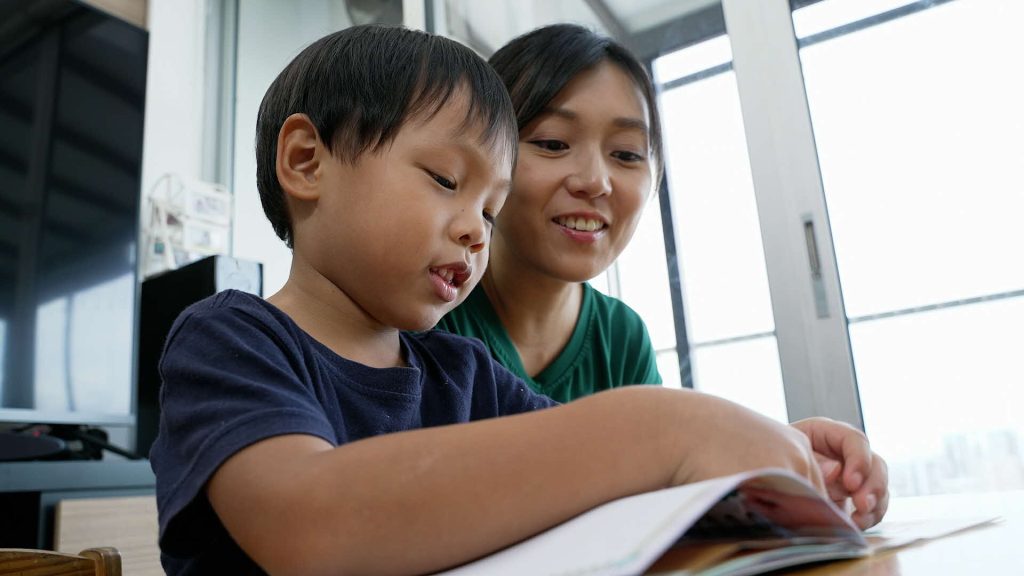
3. Music and movement is always welcome
When you witness your children singing and dancing, look at their faces. We are sure that what you see is joy.
According to Mdm Wang Yanyan, Master Specialist for Chinese Language at MOE’s Curriculum Planning and Development Division, “Music and nursery rhymes are indispensable elements in children’s lives, learning, and growth. They promote the comprehensive and harmonious development of children’s physical, psychological, intellectual, and emotional well-being. Participation, exploration, performance, and hands-on practice in music and nursery rhyme activities can stimulate their imaginative space and cultivate their imagination and creativity.”
She adds, “Music and nursery rhymes play an important role in promoting language development in children. Through frequent recitation, they can help children improve on their pronunciation, nurture coherence, rhythm, and expressiveness in language, and enhance their ability to use language effectively.”
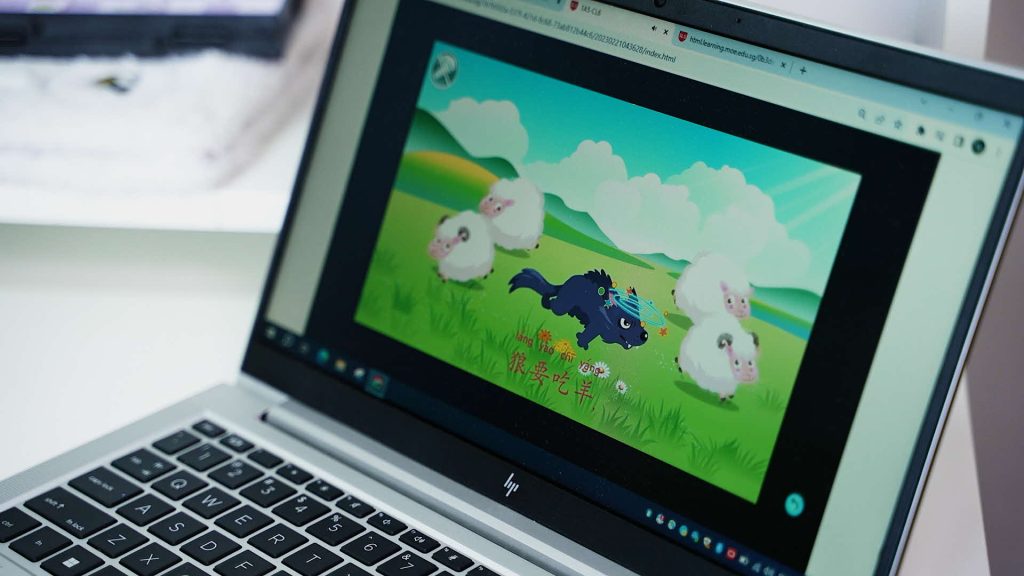
You can leverage on this enjoyable activity to increase your children’s exposure to MTLs. Music is a powerful tool for child development. It encourages physical activity, sparks creative expression, and enhances learning experiences. Importantly, music also promotes holistic MTL development.
Start with simple lyrics such as the ones in nursery rhymes. In Singapore, there are many nursery rhymes in Chinese, Malay and Tamil for you to sing along with your children. This activity is definitely a win with your children. The organising committee for the 2024 Mother Tongue Languages Symposium has acknowledged this, evident in their inclusion of a nursery rhyme challenge this year.
This view is supported by Mr Tajudin B Jaffar, Master Specialist for Malay Language at MOE’s Curriculum Planning and Development Division, who adds, “Music makes children happy and children want to move when they are happy. So, play the music.”
4. Learning language through outdoor play
Outdoor play is another activity that promotes your children’s holistic development.
Outdoor environments provide diverse sensory experiences, such as feeling different textures, hearing natural sounds, and observing various colours and shapes. This sensory stimulation can enhance children’s cognitive development and creativity.
“Children learn to navigate and negotiate physical and emotional demands when they play outdoors,” says Mr Tajudin. “They learn to be agile and to be adaptive to the surroundings. Not all these can be learnt indoors.”
Why not adapt some of the outdoor activities that you and your children participate in to include MTL usage? When engaging all their senses, your children can be exposed to Mother Tongue words or phrases to describe what they see, hear, touch, taste, and smell.
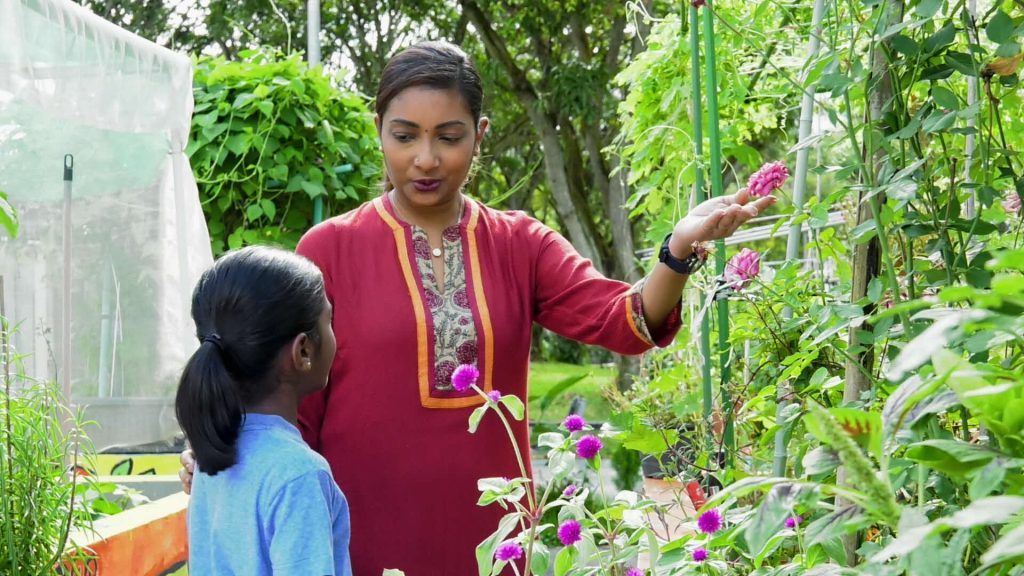
5. Attend events such as the Mother Tongue Language Symposium
Do look out for Mother Tongue events that your children would be keen to participate in. Select them based on your children’s interest to ensure they have fun while learning more about language and culture.
We recommend starting your journey at the Mother Tongue Languages Symposium (MTLS). The MTLS is a biennial event co-organised by MOE, the Committee to Promote Chinese Language Learning (CPCLL), the Malay Language Learning and Promotion Committee (MLLPC) and the Tamil Language Learning and Promotion Committee (TLLPC).
It aims to promote our MTLs by exhibiting good teaching and learning practices and efforts by both schools and the community.
At the MTLS in 2023, Minister of Education Chan Chun Sing spoke about how bilingualism is a cornerstone of our education, and is an important part of our Singapore identity.
This year, the theme is “Our Mother Tongues as Living Languages”. It will be held on Saturday, 14 September 2024, at the Suntec Singapore Convention & Exhibition Centre.
We are hosting 45 sharing sessions and interactive workshops for parents and educators, featuring bonding activities for parents and children. These sessions and workshops provide expert insights and knowledge from academics, educators, curriculum specialists, and media personalities, with the goal of promoting MTL literacy and appreciation.
You can find out more and sign up for MTLS events at www.mtls.edu.sg.
Be inspired as you watch real-life parents supporting their primary school children in learning MTL:
Chinese Language video
Malay Language video
Tamil Language video



